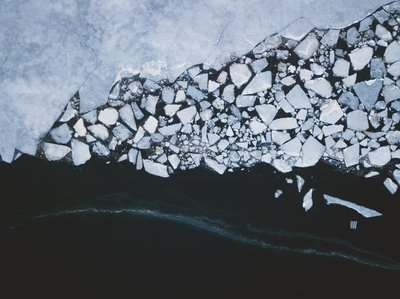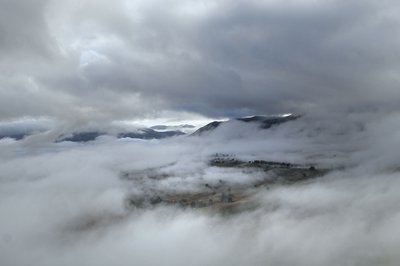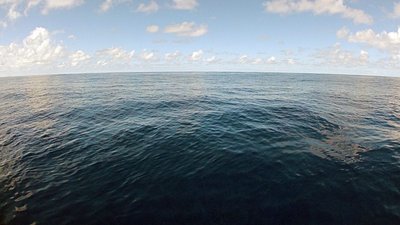Studies
CMUG Studies for CCI+ Phase 2
CMUG is undertaking several scientific Studies during CCI+ Phase 2 (2023-2026). Each scientific Study is outlined below with a Study description. Study conclusions and results will be provided when ready.
Study WP5.1 - Machine Learning to Advance Climate Model Evaluation and Process Understanding

Study WP5.2 - Impacts and Evaluation of Vegetation Phenology Changes on Observed and Modelled Land-Atmosphere Processes

Study WP5.3 - Impact of Integrating CCI Land Cover data in the ISBA Land Surface Model

Study WP5.4 - Seasonal Predictability of Ocean Biogeochemistry and Potential Benefits of ESA CCI Data Assimilation

Study WP5.5 - Cloud and Aerosol Analysis

Study WP5.6 - Snow Dynamics Impacts on Temperature / High Latitude Climate

Study WP5.7 - Ice Sheets and Atmospheric Drivers

Study WP5.8 - Using Machine Learning to Evaluate and Understand our Capability to Model Tropical Wetland Methane Emissions

Case Studies of work completed during the previous CCI+ Phase 1
CMUG performed case studies making use of CCI ECV data to both test and demonstrate its usefulness for climate science during the previous CCI+ Phase 1. Below provides access to a catalogue of case studies undertaken by the CMUG project during this time.
Aerosols

The Aerosol ECV project provides independently validated, high quality algorithms for processing long-term records of global aerosol properties from European satellite instruments. The Aerosol ECV website can be accessed here. Below is a list of articles about the Aerosol ECV project (newest articles are at the top):
Assimilating ESA CCI Aerosol dataset improves model output
Clouds

The Cloud ECV project is generating long-term and coherent cloud property datasets, generated from the synergistic capabilities of multiple European and non-European Earth observation missions. The Cloud ECV project website can be accessed here. Below is a list of articles about the Cloud CCI ECV project (newest articles are at the top):
Copernicus Climate Data Store Toolbox

The Copernicus Climate Change Service (C3S) mission is to support adaptation and mitigation policies of the European Union by providing consistent and authoritative information about climate change. C3S offer free and open access to climate data and tools based on the best available science. The C3S website can be accessed here. Below is a list of articles about C3S (newest articles are at the top):
Cross-ECV Experiments

Below is a list of articles about cross-ECV experiments (newest articles are at the top):
- Assimilating ESA CCI marine datasets for reanalysis
- Use of ocean CCI data in Met Office model
- Using CCI SST and Clouds for Studying ENSO
ESMValTool

The Earth System Model Evaluation Tool (ESMValTool) is a community diagnostics and performance metrics tool for the evaluation of Earth System Models (ESMs) that allows for routine comparison of single or multiple models, either against predecessor versions or against observations. The ESMValTool website can be accessed here. Below is list of articles about the ESMValTool (newest articles are at the top):
- ESA CCI data for model evaluation: using ESMValTool to validate CMIP6 models
- ESA CCI Land Surface Temperature data are used to assess CMIP6 models using a new ESMValTool diagnostic
- ESMValTool: Assessing, visualising and analysing CCI data
Obs4MIPs

Obs4MIPs (Observations for Model Intercomparisons Project) refers to a limited collection of documented datasets that have been organised according to the Coupled Model Intercomparison Project (CMIP) model output requirements and made available on the Earth System Grid Federation (ESGF). The Obs4MIP website can be accessed here. Below is a list of articles about Obs4MIPs (newest articles are at the top):
Ocean Colour

The Ocean Colour ECV project focuses on the Ocean Colour ECV encompassing water-leaving radiance in the visible domain, derived chlorophyll and inherent optical properties and utilises data archives from Copernicus, ESA, NASA and NOAA. The Ocean Colour ECV project website can be accessed here. Below is a list of articles about the Ocean Colour ECV project (newest articles are at the top):
Ozone

The Ozone project focuses on the generation of multi-decadal time series of harmonised and consistent ozone data suitable to assess long-term changes in total ozone, as well as its vertical distribution. The Ozone ECV project website can be accessed here. Below is a list of articles about the Ozone ECV project (newest articles are at the top):
Sea Ice

The Sea Ice ECV project aims to advance the retrieval capability for two main variables of the Sea Ice Essential Climate Variable (ECV): sea ice concentration and sea ice thickness. The Sea Ice ECV website can be accessed here. Below is a list of articles about the Sea Ice ECV project (newest articles are at the top):
- Assimilating ESA CCI Sea Ice observations to improve summer predictions in the Arctic and beyond
- A new dimension: The CCI Sea-Ice thickness data set
Sea Level

The Sea Level ECV project's main objective is to produce and validate a Sea Level Essential Climate Variable (ECV) product. This is achieved through four supporting aims. The Sea Level ECV website can be accessed here. Below is a list of articles about the Sea Level ECV project (newest articles are at the top):
Sea Surface Temperature

The Sea Surface Temperature (SST) ECV project aims to make climate data records for SST longer, more stable and more accurate, providing data users with different forms of data and documentation. The SST ECV project website can be accessed here. Below is a list of articles about the SST ECV project (newest articles are at the top):
Snow

The Snow ECV project generates long-time series of daily global snow extent maps from optical satellite data and daily global snow water equivalent products from passive microwave satellite data. The Snow ECV website can be accessed here. Below is a list of articles about the Snow ECV project (newest articles are at the top):
Soil Moisture

The Soil Moisture CCI ECV project generates long-term global soil moisture records that contribute to hundreds of hydrological and climatological studies worldwide, as well as the annual BAMS "State of the Climate" reports. The Soil Moisture ECV project website can be accessed here. Below is a list of articles about the Soil Moisture ECV project (newest articles are at the top):
- ESA CCI Surface Soil Moisture for Evaluation of CMIP6 Models
- Comparison of CCI and GLEAM Soil Moisture products

